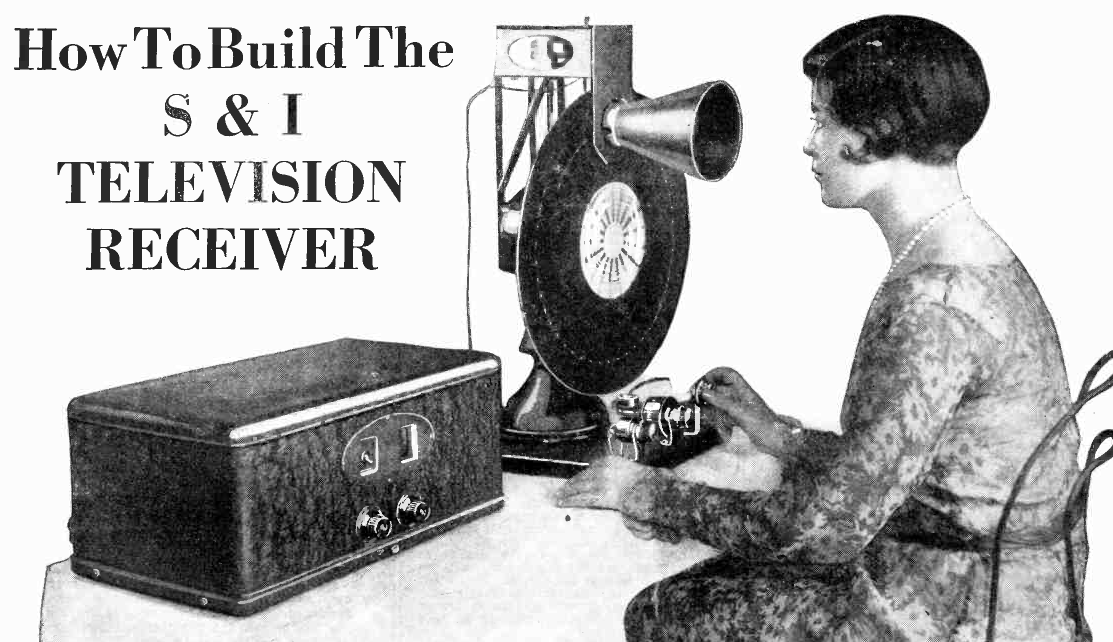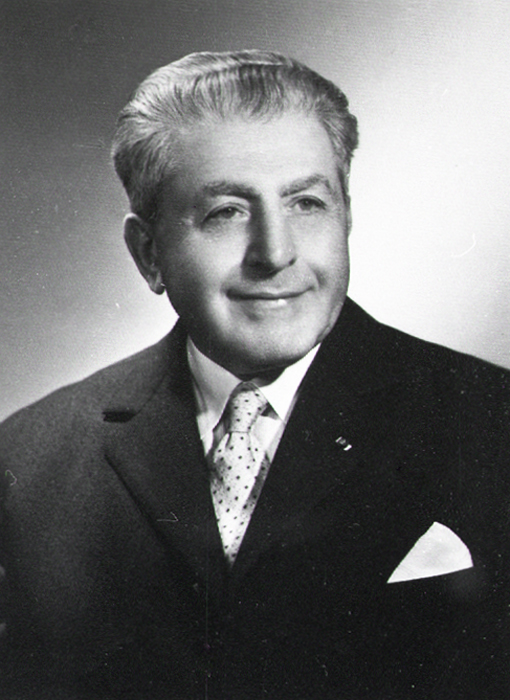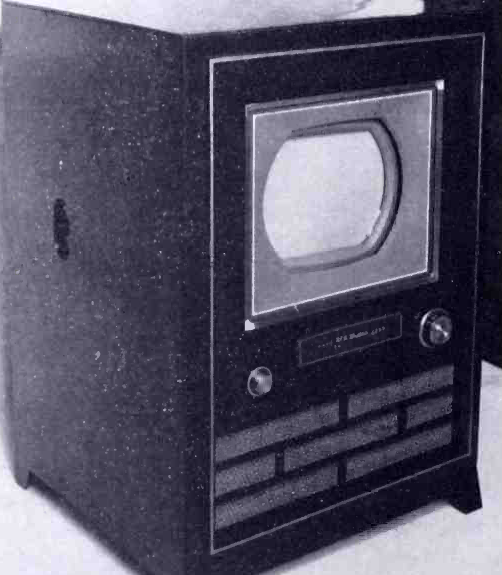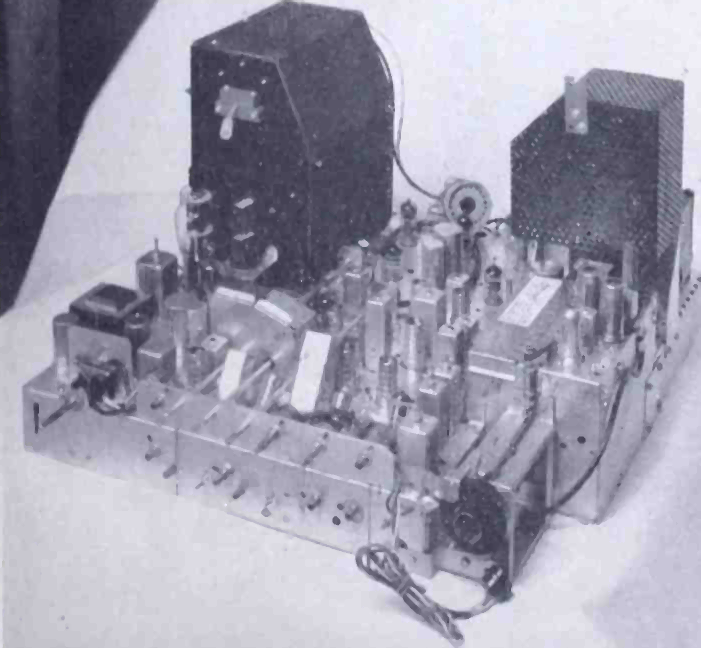The Long Strange Trip to US Color TV [Hackaday]

We are always fascinated when someone can take something and extend it in a clever way without changing the original thing. In the computer world, that’s old hat. New computers improve, but can usually run old software. In the real world, the addition of stereo to phonograph records and color to photography come to mind.
But there are few stories as strange or wide-ranging as the path to provide color TV. And it had to be done in a way that a color set could still get a black and white picture and black and white sets could still watch a color signal without color. You’d think there would be a “big bang” moment where color TV burst on the scene — no pun involving color burst intended. But there wasn’t. Instead, there was a long, twisted path with many competing interests and ideas to go from a world in black and white to one tinted with color phosphor.
Background

It is hard to imagine, but John Logie Baird transmitted color images as early as 1928 using a mechanical scanner. Bell Labs had a demonstration system, also mechanical, in 1929. Baird broadcast using his system in 1938. Even earlier, around 1900, there were attempts to create mechanical color image systems. Those systems were fickle or impractical, though.
Electronic scanning was the answer, but World War II froze most consumer electronics development. Baird showed an electronic color system in late 1944. However, it would be 1953 before NTSC (the National Television System Committee) adopted the standard color TV signal for the United States. It would be almost 20 years later before SECAM and PAL were standardized in other parts of the world.
Of course, these are all analog standards. The world’s gone digital now, but for nearly 50 years, analog color TV was the way people consumed TV in their homes. By 1941, NTSC produced a standard in the United States, but not for color TV. TV adoption didn’t really take off until after the war. But by 1950, the US had some 6 million TV sets.
This was both a plus — a large market — and a negative. No one wanted to obsolete those 6 million sets. Well, at least, the government regulators and consumers didn’t. But most color systems would be incompatible with those existing black and white sets.
Practicality
In addition, a practical solution for home use couldn’t use expensive optics or precisely adjusted mechanics. RCA demonstrated a system in 1940 that used three black and white screens with color filters, each projecting to the same screen to get a dim color image. Although these kinds of projectors were among the first big-screen TVs available decades later, the technology of the time made three tubes and receivers prohibitively large and expensive.
Some thought of combining three guns into one picture tube, which would turn out to be the right answer. However, the tubes of the day were not very precise. To match a monochrome tube, the electron guns would need to focus on a spot three times smaller than a monochrome picture tube.
This was impractical in the 1940s, so people experimented with hybrid systems that used a single monochrome screen and some disk or mirror to pass the picture through a color filter at the exact right time. Since the system showed a picture three times per frame, the frame rate had to increase, making things incompatible with existing receivers. Baird’s 1940 demonstration did just this, but even he admitted that the mechanics were not really practical.
CBS vs NBC
Meanwhile CBS was experimenting with a system from Hungarian Peter Carl Goldmark. It was also partially mechanical and used a disk with color filters spinning at 1,200 RPM. The FCC and the press got a demo in 1940.
In 1941, NBC — then owned by RCA — started its own color broadcasts. There were no color sets, though, and the signals wouldn’t work with an old TV, so unless you were invited by NBC to watch, you couldn’t see it. And then the war was starting, so most color TV would go on hold until later.
Telechrome and Others
Baird was working on Telechrome, which used two electron guns aimed at either side of a phosphor plate. By necessity, this could only produce two colors, so the picture wasn’t perfect. There were plans to create a three-gun system, but Baird died in 1946, and that was the end of Telechrome.
There were a few other similar systems up through the 1950s. The Geer tube used tiny pyramids, where each side had a different color of phosphor. The Penetron had three layers of phosphor and increased the beam strength to light up the top layers. There were others.
Post War
After the war, it was clear that color TV would come. The FCC was worried about channel space and created the UHF band. At the time, everyone thought that color TVs would be unusable for old black and white transmitters and vice versa, so the idea was VHF would stay black and white, and UHF would house color stations until all the old transmitters were gone.

CBS improved its system, which showed 144 fields per second at 405 lines of resolution. Philco and Color Television, Inc. also had systems. The FCC was to pick, but RCA declined to demonstrate the technology it was working on during the 1948 meetings of the Joint Technical Advisory Committee (JTAC).
In 1949, JTAC endorsed the CBS system, and RCA showed their system, which allowed black-and-white programs and receivers to continue working. The FCC, however, said the Color Television Inc. and RCA systems were flawed and approved the CBS system in late 1950.
CBS had one color camera and had used it in the early part of 1950 to broadcast a few hours of programs to TVs installed in public buildings. However, even after approval, they had to wait for an RCA lawsuit to conclude before starting broadcasting in earnest.
The CBS Debacle

In the middle of 1951, color TV was officially on the air using the CBS system. Unfortunately, there were virtually no color TV sets, and the signal wasn’t compatible with black and white receivers. There were some adapters, but they were not generally popular. CBS eventually bought a TV maker and produced CBS-Columbia color sets late in 1951.
They shipped 200 sets, and only 100 were sold. A month later CBS decided to shut it down — possibly by request of the government due to the Korean War. CBS bought back the handful of receivers to prevent a possible lawsuit. David Sarnoff of RCA claimed the Korean War excuse was just that — an excuse to allow CBS to gracefully get out from under an unworkable business.
The RCA Concept

RCA used a 1938 invention from a Frenchman, Georges Valensi, to pull off its compatible color signal. The system took the color information from three cameras and generated a luminance signal that was — essentially — a black-and-white image using the normal standard.
Valensi’s original system also produced a chroma signal consisting of the blue minus the luminance and the red minus the luminance signal. A black-and-white TV tuned to the luminance on one channel, while a color set would pick up both signals using two frequencies.
In the color receiver, you would add the luminance or subtract from it to recover all three color channels. The downside, though, was that it required two different frequencies. In addition, RCA’s early attempts used projection, which was weak and difficult to align. RCA wanted to develop a color picture tube and reportedly spent $100 million to do so. The Geer tube was first, but RCA eventually successfully produced a pre-war invention from German Werne Flechsig.
Fleshcsig’s tube used a shadow mask to prevent, for example, the green beam from hitting a red phosphor dot. The downside is that the shadow mask also reduced the intensity of the beams, which required a more energetic electron gun. That’s why color TVs had much higher voltages than black-and-white sets.
In 1949, RCA broadcast the TV show “Kukla, Fran, and Ollie” in color, although only the FCC had the equipment to view it. The FCC still did not approve the system.
Reenter the NTSC

The NTSC decided to reform to reconsider the color TV problem. The FCC was opposed and even accused enginers that favored the RCA or similar systems as being “in a conspiricy against the public interest.” The NTSC worked on a system based on RCA’s design starting in 1950 and broadcasts tests in 1951. The system used a subcarrier to transmit the chroma signal, meaning it required no additional bandwidth and would continue to work with the millions of TVs already in people’s homes. Early in 1953, CBS testified to Congress that they were out of the color TV business, and this allowed NTSC to seek approval, which they got at the end of 1953.
The original monochrome signal was refreshed at 60 Hz, the same as the US powerline frequency. A color signal, however, refreshes at 59.94 Hz, which most sets could easily accommodate, and reduces interference between the color signal and sound. The color information appears on two 3.58 MHz (actually, 3.578545 MHz) carriers that are 90 degrees out of phase and then carrier suppressed. The resulting sine wave varies in amplitude based on color saturation and phase based on color hue. Adding this signal to the luminance — the normal black-and-white signal — results in a normal video signal that also contains the color information.

Most TVs have a trap to keep the color information from showing up on the screen, but very old TVs may lack this. The only other issue is a phase reference to measure the chroma signal against. On the “back porch” of the video signal’s horizontal sync pulse, there are a few cycles of the unmodulated color subcarrier. The audio is also encoded on a subcarrier at 4.5 MHz using FM.
To make everything fit in a 6 MHz TV channel, the transmitter suppresses the lower sideband (but does not remove it). The lower sideband occupies 1.25 MHz. The upper sideband is 4.2 MHz wide and contains the chroma signal about 3.58 MHz away from the center. The audio is FM modulated at 4.5 MHz with a 25 kHz deviation. There’s also a 250 kHz guard band at the bottom, giving a total of 6 MHz. If you want a good introduction to NTSC video, [John] has a good video talking about NTSC output on a Z80 you can see below.
Adoption
Of course, there were few sets and not a lot of color programming. The 1954 Tournament of Roses Parade was in color, and the 1956 season of the Perry Como Show was, too, or at least most of it was. The RCA TK-41 color cameras needed bright lights and were expensive to operate.
It would be over a decade before most network shows were in color and the cost of color sets made them practical. For example, in 1954 a color TV was selling for around $1,200 — quite a bit of money back then. Westinghouse reportedly sold 30 sets in the first month of sales.
By 1964, only 3.1% of US homes with a TV had a color set. It was 1972 before color TV sales exceeded black-and-white, and that same year, the percentage of homes with color was more than half.
Of course, in the early 2000s, everything went digital, and all of this was moot. There are no more black-and-white sets unless you turn down the color control.
When you think about it, the ability to shoehorn a color signal on a black-and-white signal is remarkable. Even more so when you think of all the manipulation required without the sophisticated techniques we’d use today to generate precise frequencies and times.
While we’ve talked about NTSC many times, we don’t always dig through the whole history. Of course, there’s also the history of the rest of the world, which we didn’t even scratch in this post.

![the-long-strange-trip-to-us-color-tv-[hackaday]](https://i0.wp.com/upmytech.com/wp-content/uploads/2024/03/174677-the-long-strange-trip-to-us-color-tv-hackaday.png?resize=800%2C361&ssl=1)